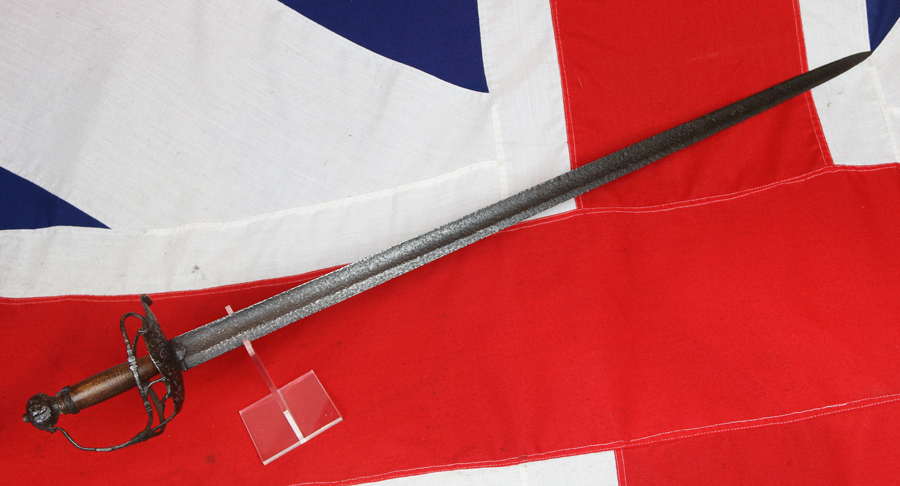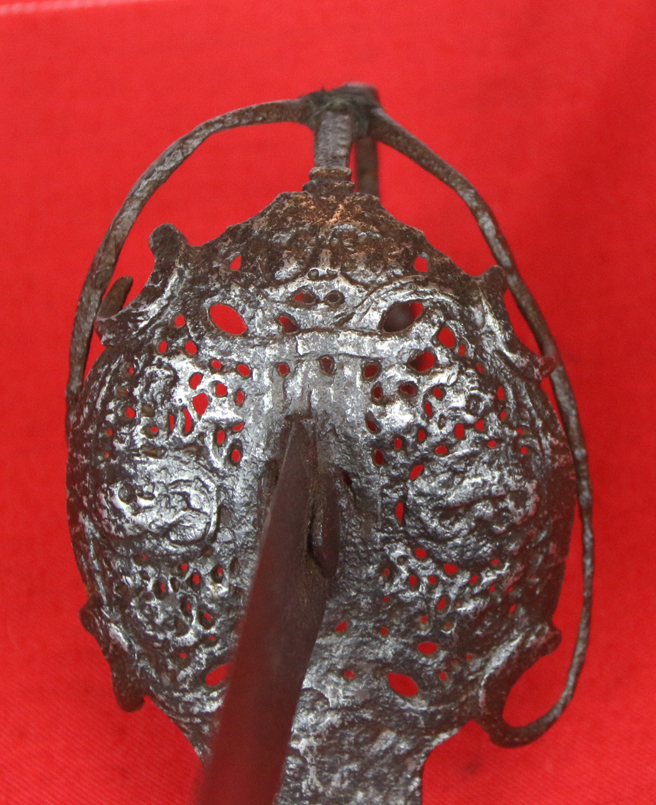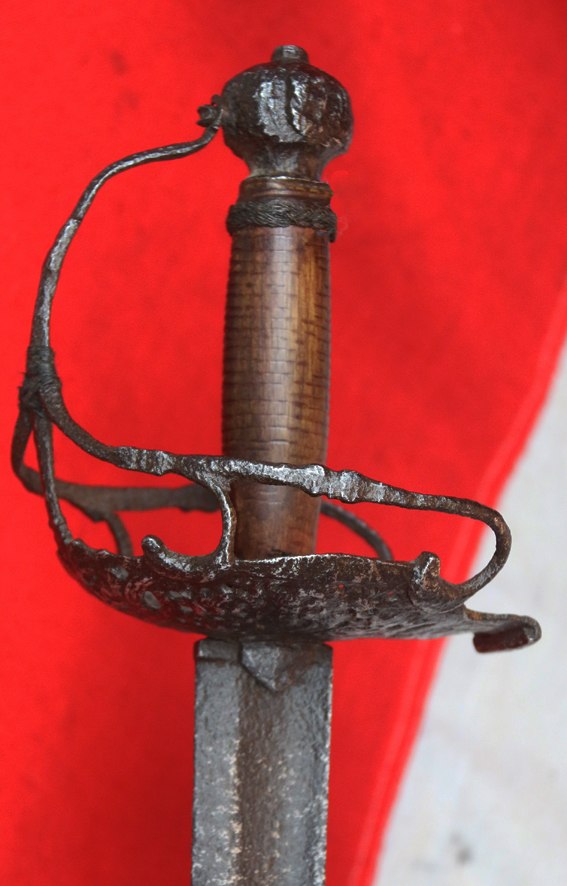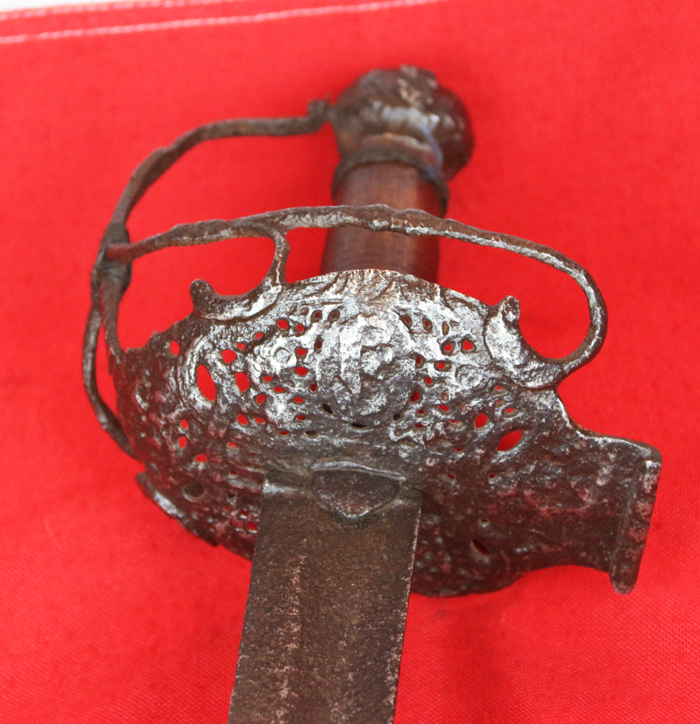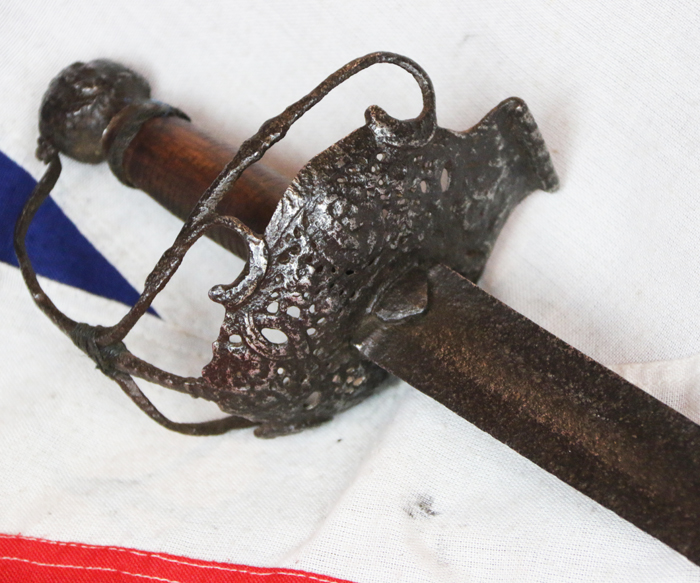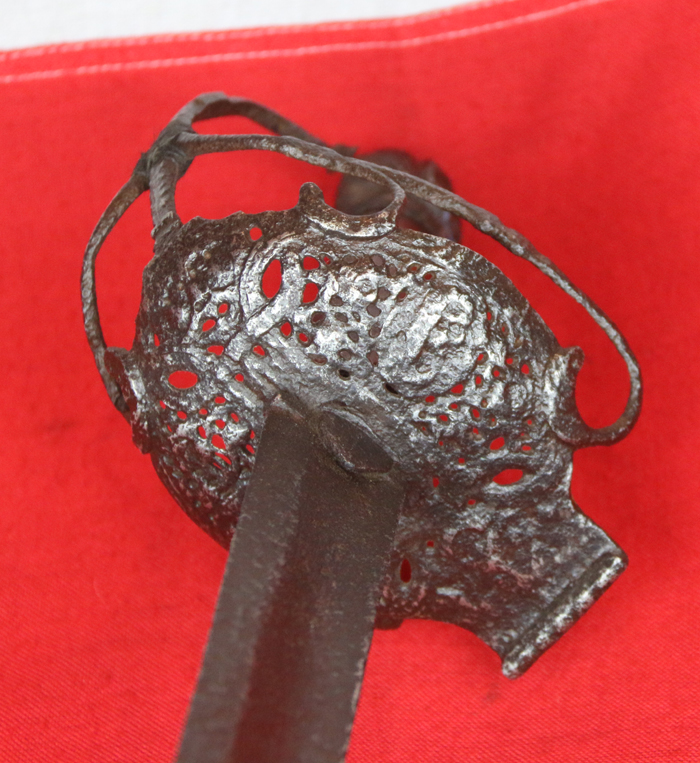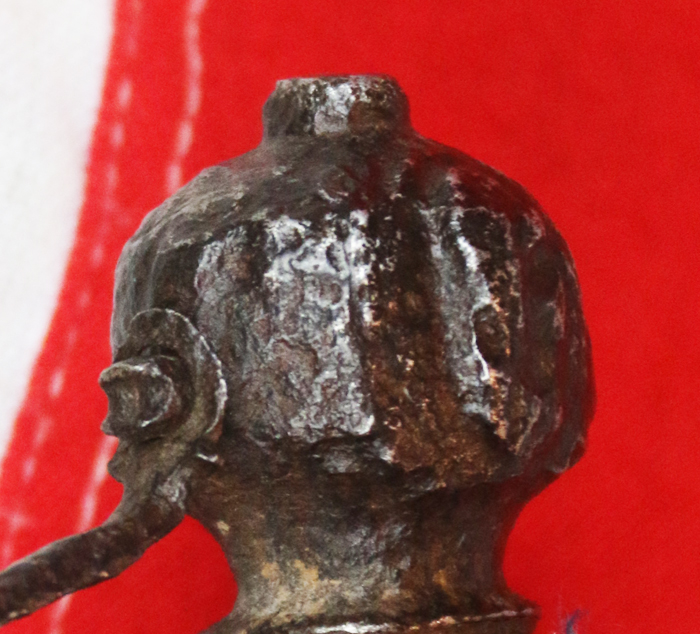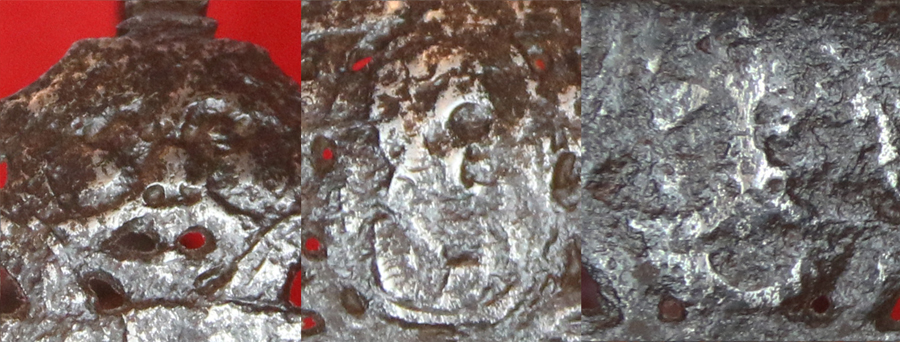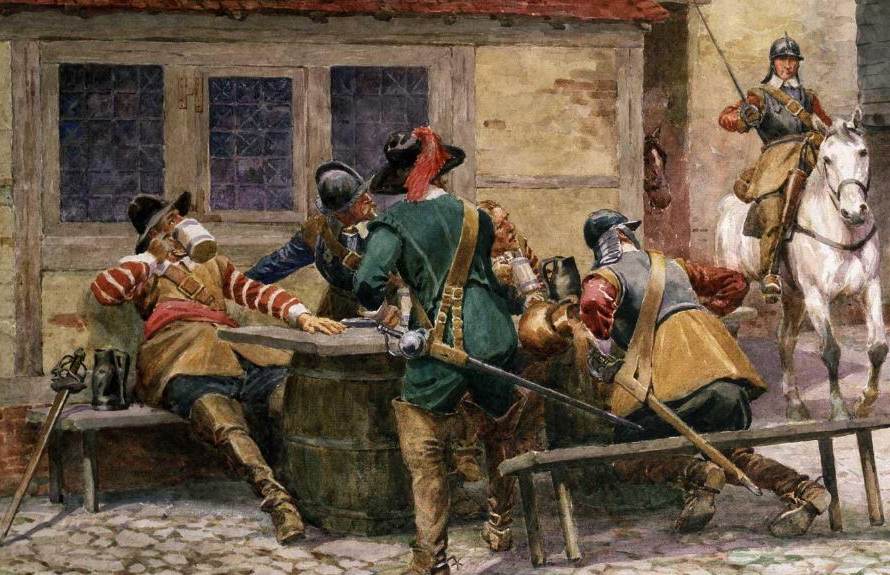A Very Good, Original, 1640’s English Civil War Officer's Mortuary Hilted Back Sword. The Most Iconic Sword of 17th Century England & Used During Most Devisive Period of British History.
The traditional sword’s basket hilt bears, within oval panels, the engraved facial portraits, it is said, of King Charles Ist and Queen Henrietta, and several of the Green Man.
In the grey dawn of an England divided, as musket smoke curled over muddy fields and the clash of steel echoed across hedgerows, a particular weapon emerged as both a tool of war and a symbol of allegiance—the mortuary-hilted sword.
It was the year 1643. The kingdom was rent in two: Royalists loyal to King Charles I, and Parliamentarians fighting for, what they believed to be, the soul of England. In a forge just outside of London, nestled between the smoke-blackened rooftops of Southwark, a master bladesmith hammered a length of fine steel into shape. This sword would not be adorned with pomp or gilded with royal insignia. Instead, it bore a hilt that wrapped protectively over the knuckles like a skeletal hand—a mortuary hilt, practical and grim.
The name “mortuary sword” would later come from the erroneous belief that these hilts resembled funerary monuments or death masks, perhaps in reference to effigies of Charles I after his execution. In truth, they were designed for utility and protection, favoured by cavalrymen of both protagonists, for their sturdiness and balance. The complex iron hilt guarded the hand, while the long, straight, double or single edged blade, was ideal for both slashing and thrusting from horseback.
That sword described above was commissioned by Colonel Jonathan Harwood, a stern Parliamentarian officer in the New Model Army. Harwood, a veteran of Edgehill and Marston Moor, had turned from courtier to commander, disillusioned by the decadence of the Royal court. The mortuary sword at his hip was a symbol of this transformation—elegant but restrained, deadly but not ostentatious.
He carried it into battle at Naseby, where Parliament's forces broke the back of the Royalist army. The blade bit into the chaos of war, crossing with Scottish mercenaries, Dutch sabres, and French rapiers alike. And when the war drew to its bloody conclusion and the King’s head fell at Whitehall in 1649, the sword remained—not as a trophy, but as a testament to a nation’s reckoning.
After Harwood’s death in 1657, the sword passed to his son, who kept it sheathed above the hearth, a relic of turbulent times. Just as our sword may well have done. and, over the centuries, they changed hands, passed from soldier to collector, from dusty manor to museum. The once-blackened hilts still bore the ghost of the Parliamentarian's or Royalist's grip, and the steel, though dulled with age, whispered of riders in buff coats, of Cromwell’s charge, of England in convulsion.
Today, such mortuary-hilted swords like ours, can be seen in museums across Britain, including the Royal Armouries and the Imperial War Museum, their austere design speaking of a time when brother fought brother, and swords like this one helped shape the course of a kingdom.
In the Victorian period these swords thus became known as Mortuary hilted swords, due to the executed king's visage being designed within the hilt pattern. It is not known exactly how this came to be, but there is no known use of the term Mortuary hilted before this time. In the Civil War, the opening of the battle usually involved groups of cavalry, with the officers carrying these very form of swords. The main objective was to make the opposing cavalry run away. When that happened, the victorious cavalry turned on the enemy infantry. Well-disciplined pike men, brave enough to hold their ground, could do tremendous damage to a cavalry charging straight at them. There are several examples of cavalry men having three or four horses killed under them in one battle. At the start of the war the king's nephew, Prince Rupert, was put in charge of the cavalry. Although Rupert was only twenty-three he already had a lot of experience fighting in the Dutch army. Prince Rupert introduced a new cavalry tactic that he had learnt fighting in Sweden. This involved charging full speed at the enemy. The horses were kept close together and just before impact the men fired their pistols, then arming themselves with their swords for the all too fearsome hand to hand
One of the Roundhead officers who saw Prince Rupert's cavalry in action was a man called Oliver Cromwell. Although Cromwell had no military training, his experience as a large landowner gave him a good knowledge of horses. Cromwell became convinced that if he could produce a well-disciplined army he could defeat Prince Rupert and his Cavaliers. He knew that pike men, armed with sixteen-foot-long pikes, who stood their ground during a cavalry attack, could do a tremendous amount of damage.
Oliver Cromwell also noticed that Prince Rupert's cavalry were not very well disciplined. After they charged the enemy they went in pursuit of individual targets. At the first major battle of the civil war at Edge hill, most of Prince Rupert's cavalrymen did not return to the battlefield until over an hour after the initial charge. By this time the horses were so tired they were unable to mount another attack against the Roundheads.
Cromwell trained his cavalry to keep together after a charge. In this way his men could repeatedly charge the Cavaliers. Cromwell's new cavalry took part in its first major battle at Marston Moor in Yorkshire in July 1644. The king's soldiers were heavily defeated in the battle. Cromwell's soldiers became known as the Ironsides' because of the way they cut through the Cavaliers on the battlefield. The Mortuary hilted swords actually gained their unusual name some considerable time after the Civil War. For, as they bore representational portraits of King Charles Ist, it was believed in Victorian times that they were to symbolize the death of the King, however, as these swords were actually made from 1640, long before he was executed, it was an obviously erroneous naming, that curiously remains to this day. This example is a beautiful, and singularly handsome piece and would certainly be a fine addition to any collection of rare English swords. There are a few examples near identical to this sword in the Royal Collection and the Tower of London Collection.
Unfortunately, as is often the case, the ‘victory’ for the 'people' by Cromwell and his puritan Parliamentarians eventually brought rewards and lands for those puritans in charge, but for the 'people', only considerable misery and disquiet. The puritans dour religious fervour and overtly anti-celebratory religious edicts {such as banning Christmas festivities, dancing, music and even mince pies} brought great unhappiness and resentment to Britain and so the exiled King, Charles IInd was invited by the people to return from his exile in France to reign once more. The once lauded, but now dead Cromwell, was disinterred, his body tried for treason, found guilty, and his head once cut off was displayed at Westminster Hall for several decades. Yet one more politician that promised much, yet delivered little.
Every single item from The Lanes Armoury, Britain's famous, favourite, and oldest original Armoury Antique store, is accompanied by our unique Certificate of Authenticity. Part of our continued dedication to maintain the standards forged by us over the past 100 years of our family’s trading, and thus, it is a lifetime guarantee.
In good condition for age with natural age wear and tear, single side bars. 35.25 inch long blade, overall 41 inches overall
Code: 23161
2950.00 GBP

